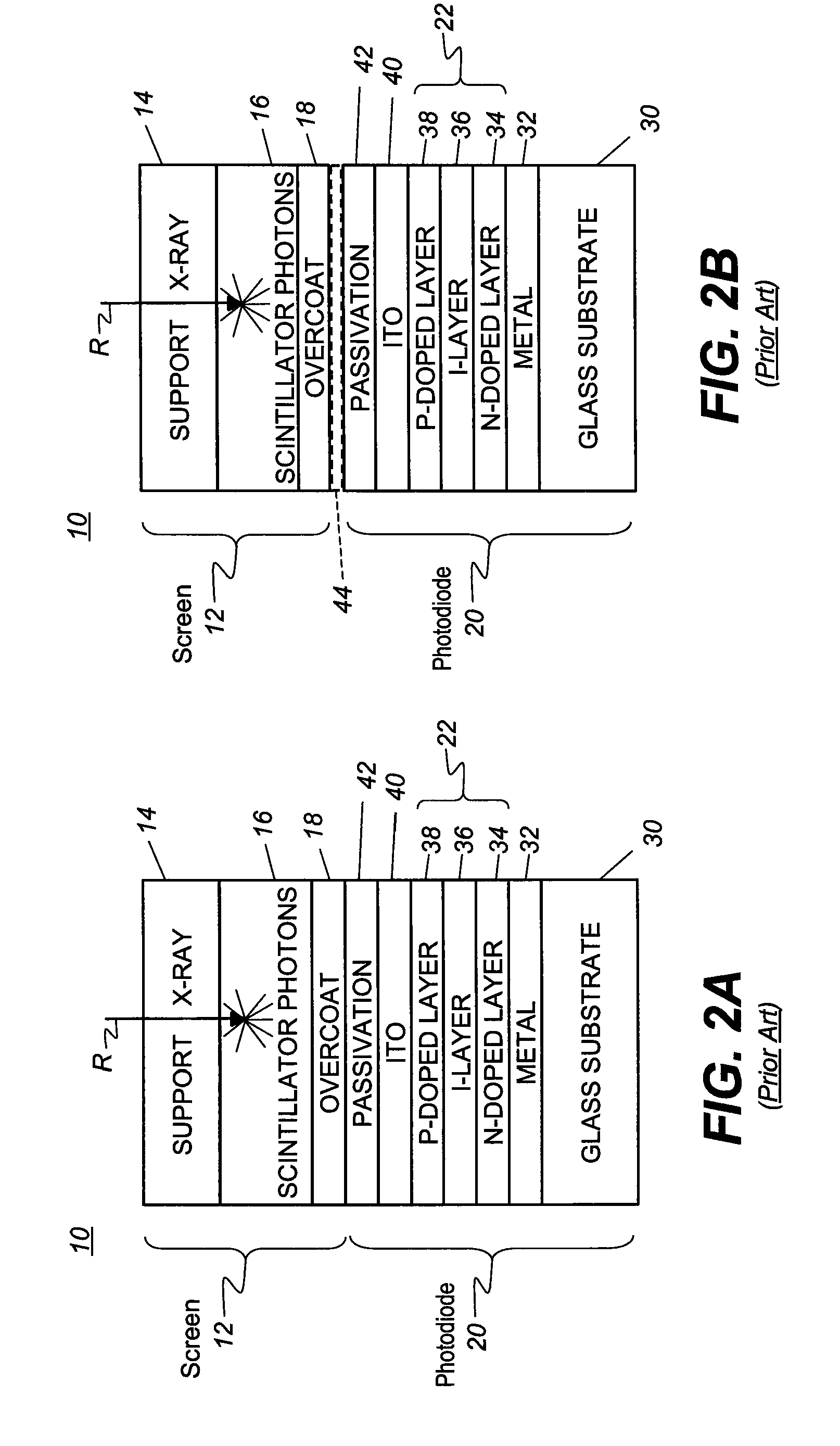Digital radiography panel with pressure-sensitive adhesive for optical coupling between scintillator screen and detector and method of manufacture
a technology of digital radiography and optical coupling, applied in the field of digital radiography (dr) systems, can solve the problems of reducing the optical degrading image quality, and reducing the efficiency of image formation, so as to improve the efficiency and resolution of dr panels
- Summary
- Abstract
- Description
- Claims
- Application Information
AI Technical Summary
Benefits of technology
Problems solved by technology
Method used
Image
Examples
examples
[0064]As described earlier, the optical coupling efficiency depends on the optical properties of each layer for both the scintillator screen and the detector array. Using typical optical parameters for each component in a flat-panel detector, the optical coupling efficiency for various designs are calculated and shown in Tables 1 and 2 for systems using Gd2O2S and CsI screens, respectively.
[0065]These examples show various combinations of phosphor materials, the overcoat layers, the PSA layer, and the passivation layer of the detector array. Results shown in Tables 1 and 2 can be summarized as follows.
[0066](a) If there is an air gap between the scintillator screen and the detector array, the optical coupling efficiency would be reduced by about 60% (Examples 2 and 8 in Table 1, and Examples 12 and 18 in Table 2).
[0067](b) With the use of an index matching PSA layer, the optical coupling efficiency would only decrease by about 2% (Examples 3, 4, 5, and 7 in Table 1, and Examples 13,...
PUM
 Login to View More
Login to View More Abstract
Description
Claims
Application Information
 Login to View More
Login to View More - R&D
- Intellectual Property
- Life Sciences
- Materials
- Tech Scout
- Unparalleled Data Quality
- Higher Quality Content
- 60% Fewer Hallucinations
Browse by: Latest US Patents, China's latest patents, Technical Efficacy Thesaurus, Application Domain, Technology Topic, Popular Technical Reports.
© 2025 PatSnap. All rights reserved.Legal|Privacy policy|Modern Slavery Act Transparency Statement|Sitemap|About US| Contact US: help@patsnap.com



